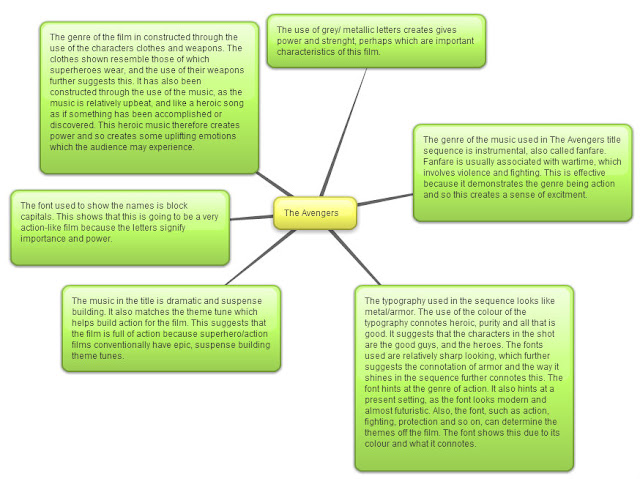Sunday, April 28, 2013
Saturday, April 20, 2013
Friday, April 19, 2013
Question 5
How did we appeal to an audience?
As out target audience was mainly teenage girls, we tried to appeal to them by including typical girly images which were very stereotypical and girly. For example, the use of make-up products, hairspray, colour purple illustrate this. We varied these shots by having to put together many close-up shots which were fast paced and this entertains the audience, maintaining their attention. Other shots which I particularly liked where the shots of the girls shoes, because the close-up shots allowed us to catch the detail of their glitter and sparkly decoration,again something which may attract our target audience.
Here are a couple of snippets from our opening sequence which I think really would captivate our audience, and empathise the romantic/ coming-of-age film genre:
Party Scene:
By beginning the opening sequence with a party, I think that this is going to attract the audience, who are predominantly young people. We wanted to create a very positive, upbeat and enthusiastic atmosphere right from the beginning, and so the party scene allowed us to create this. We also wanted to engage our audience by making them feel like they are part of the sequence. We decided to create this effect by setting the camera on a dolly and following me with it. This makes the audience feel like they are also in the the party, as they get to see the action of the people inside the party, the environment around them, and so attracts them even more.
Question 6
1) What are the advantages and disadvantages of different technology used?
-
2) What could you have done, but didn't?3) What advice would you be able to pass on to others wanting to make an opening sequence?Pre-production: Careful planning is essential, so people need to make sure that they have planned their story board with all the different shots which they are going to use in the production of their film. If this is done properly then it is highly likely that on the day of filming, this will go much more smoother and according to plan, than someone who has no storyboard, and is therefore unprepared.Location, props and characters also need to be taken care of in this stage. People should think carefully when wanting to get actors to play in their opening sequence such as they need to be well suited and be willing to work long hours. In terms of location, people should go and make sure it is safe to film, ask permission to film there as some places may not allow you to film.Production: On the day of filming, it is important that everyone knows exactly what they are doing, and everyone sticks according to their schedule. On the day of filming the party, we created a strict schedule of when we film, when we have lunch, etc and we found this so much easier as we felt fully organised. It is important to have lunch hours where you feed the crew and actors, as unhappy actors can result in problems.When filming over a long period of time, it is vital that you take a picture of the location in order to make continuity editing work. This is what we did as we formed over the course of 2 weeks and sometimes the make-up products on the table we placed elsewhere.Post-prodution: The editing is crucial in making someone visual picture come to life of their opening sequence. For our opening sequence we asked as many people to watch our product as we can because this made sure that we gain constructive critisism and we can then go back and change things.4) What could you have done but didn't?Establishing shot: Initially we wanted to open the sequence up with setting the camera up on a dolly and tracking along slowly, entering the party. This would have been good because it is like the viewer is entering the party, engaging them. However, we ended up doing a simple handheld shot for this scene because the surface was very rough and we could not find a smooth surface to use the dolly.Despite this, I still think that this shot was effective that we have currently used, and it is vital in letting the viewers know where the scene of action is taking place.Conversation between me and Ruby: We were going to have the conversation between us longer instead of a simple 'Hey when are you going to be here', then 'Bye', however because we only had 2.30 max to make an opening sequence, we would have went over our limit.Freeze scene: In our planning stage, we had an idea where Ruby enters the house, and everything in the background freezes or is slightly blurred expect these two main characters, in order to empathise their immediate attraction for one another. However, we did not do this as it was quite complicated, and it would have been too cheesy, which wasn't something we wanted at the end.Credits: We were going to have the credits appear on the products of the characters as they were getting ready, i.e. a magazine cover, mascara, lip gloss. However, at the end we decided to put them all at the beginning as this was a very lengthy process and we did not have enough time to do this.
Question 1: In what ways does your media product use, develop, or challenge forms and conventions of real media products?
a)
b) Narrative:
According to Todorov, there are five stages the narrative process can go through:
- A state of equilibrium (all is as it should be)
- A disruption of that order by an event
- A recognition that the disorder has occurred
- An attempt to repair the damage of the disruption
A return or restoration of a NEW equilibrium
In our opening sequence, we our state of equilibrium would be the boy and girl in a happy relationship For example, after the party scene he may ask her out and they go on a couple of dates, nothing disastrous has happened yet, and it is all as it should be.
However, a disruption may occur later, for example something may happen which causes their relationship to fall apart and result in a breakdown, such as they may have had an argument.
After a while being apart, the girl and the may realise that by breaking up they miss each other and the memories they share. They may start to think about each other and struggle with this breakdown.
Therefore, they may attempt to repair the damage of the disruption such as the boy/ girl may apologise for what they had done, try to talk about their problems and fix this problem. Therefore, they are back to this 'happy' stage of being together, and we return to the new equilibrium.
c)- form
d) - style
In our opening sequence, we our state of equilibrium would be the boy and girl in a happy relationship For example, after the party scene he may ask her out and they go on a couple of dates, nothing disastrous has happened yet, and it is all as it should be.
However, a disruption may occur later, for example something may happen which causes their relationship to fall apart and result in a breakdown, such as they may have had an argument.
After a while being apart, the girl and the may realise that by breaking up they miss each other and the memories they share. They may start to think about each other and struggle with this breakdown.
Therefore, they may attempt to repair the damage of the disruption such as the boy/ girl may apologise for what they had done, try to talk about their problems and fix this problem. Therefore, they are back to this 'happy' stage of being together, and we return to the new equilibrium.
Why did we decide to call our movie title 'Snakes and Ladders?'
The reason for this is because as part of our narrative story, we wanted to illustrate in the rest of our film two young teenagers going through ups and downs in their relationship. For example, after their party they may start going to more dates, and thus this is like them climbing up the ladder, progressing in their relationship. However, at other times, they may argue or experience hard times, and fall down the snake. I think this is very realistic and things everyone may go through at some point of their life, so our narrative is easy to follow, and teenagers and even adults can relate to this.
c)- form
d) - style
Friday, March 22, 2013
Completion
We have finally completed our opening sequence!! Today we worked on getting the credits done and I think they are really nice because the fonts are all different colours which suit our genre of a coming of age/ romantic movie. The music is also very effective as it creates a sense of exciting and happy atmosphere which is exactly what we wanted. Overall I am pleased with the finishing opening sequence and am glad we have completed it after all the hard work we put in :)
Thursday, March 21, 2013
Representation: Gender- Girl
In our opening sequence, we are going to be using representation of a stereotypical boy and girl. For the girl, I think we need to show that she fits into our genre of a typical 'girl', and so by showing her doing her make-up, hair, put on girly shoes and a dress, these are typically these we would expect when watching a coming-of-age/ romantic film. The room she is in is also very important and so by using colours (i.e.. purple, pink) that would typically be associated to a girl, this would represent the girl as stereotypically character and the audience can clearly see that she is a teenager. As this is a film aimed at a young adult audience of 14-25 years old, therefore we wanted to create issues that would be realistic to our target audience. Therefore, as the girl enters the room, she immediately becomes the 'love interest' for the boy, who sees her and finds instant attraction in her. This represents the girl as a typical coming-of-age/ romantic girl as the pretty girls in these movies nearly always appear to get the guys, making her appear as popular. Her use of products are also very girly, such as the gold glittery shoes makes her stand out and add to the aspects of presenting her as a stereotypical 'girly' girl. By the use of many close-up shots of her doing her make-up and her products, this gives more close detail of the main girl character and so the audience begin to connect with her as they follow her getting ready and going to the party.



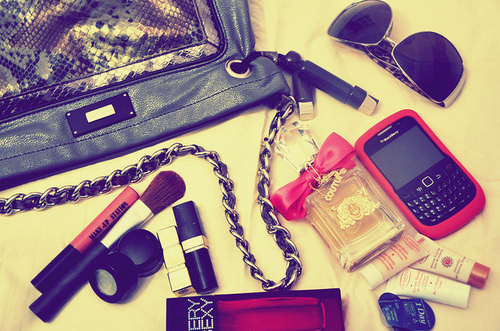




Monday, March 18, 2013
Title for our opening sequence
As we have completed editing the sequence for our opening sequence, in today's lesson we looked at creating music for the party scene and finding the perfect title for our movie. We looked at many different examples of movie titles in romantic and coming of age film genres in order to get inspired and get an idea of the types of titles that would be most appropriate.
We didn't want anything that was too cheesy and by looking at titles which other movies had, most of them were cheesy and included the word 'Love', and so we wanted to be more original in creating our title. Here are some movie titles I found of romantic/ coming of age genres:


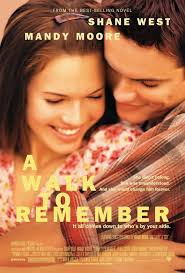



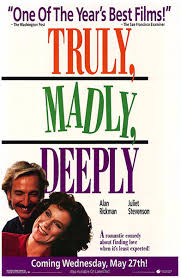




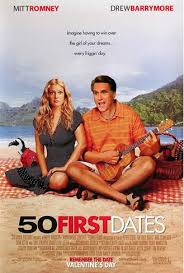

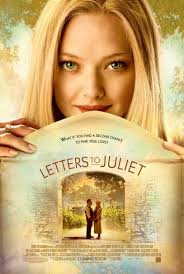


We didn't want anything that was too cheesy and by looking at titles which other movies had, most of them were cheesy and included the word 'Love', and so we wanted to be more original in creating our title. Here are some movie titles I found of romantic/ coming of age genres:





The title we have decided to give our movie is 'Snakes and Ladders' as we thought this would be appropriate for our genre and it wasn't something too cheesy. We decided to call this because in our movie the couple would go through ups and downs in their relationship, such as go through phases which may knock their relationship down, but then they might get back together and result in an equilibrium, climbing up the ladder again. I think this is an appropriate movie title because it suits our target audience well because it is aimed at young adults, and so they may be able to relate with these realistic situations in our movie.
Sunday, March 17, 2013
Titles and Credits
In our group, we still haven't decided where it would be best to put the credits in our opening sequence. I have done some research into movies with our genre of coming-of-age and romantic films in order to get some inspiration of where we should place our credits.
The Wild Child:
The Wild Child:
| In this movie, they have the opening title for their movie as soon as the girl wakes up and gets out of her bed. This is effective because we are immediately aware who the main character is and perhaps who the 'wild child' actually is so it may be also good if we have our title at the beginning rather than near the end. |
| For the film the opening title appears along with the credits and before we see any of the character's. The pink makes it appear girly and so matches the coming-of age/ chick flick film. Therefore, in our opening sequence we will try to use colours that represent our genre of movie. As ours is a coming of age and romantic movie, using light colours can represent this genre rather than using darker colours, which makes it more like a horror movie. |
Subscribe to:
Posts (Atom)

